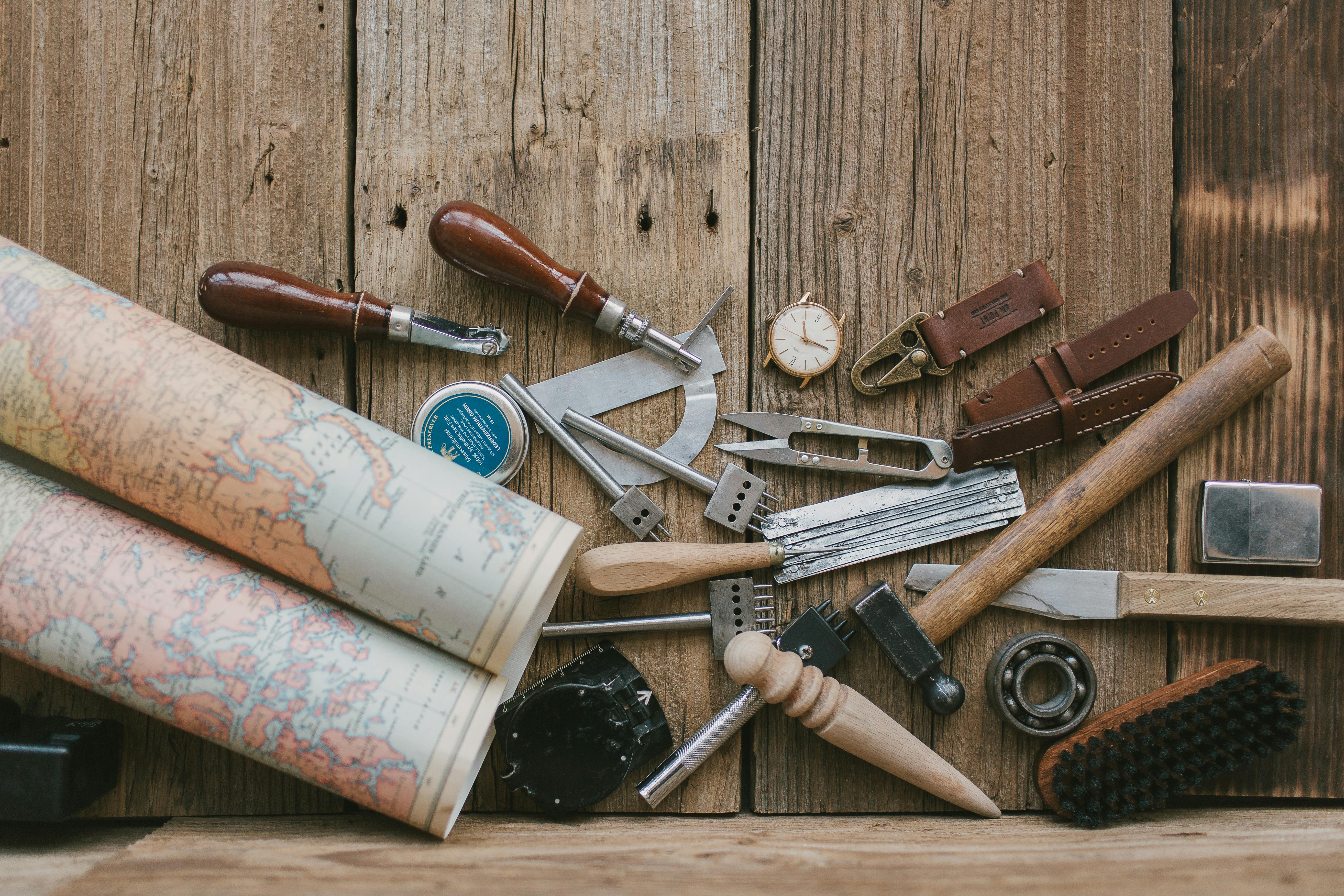
Unearthing History: A Collector’s Guide to Antique Hand Tools and Their Legacy

Unearthing History: A Collector’s Guide to Antique Hand Tools and Their Legacy
Few things can rival the charm and significance of antique hand tools when it comes to craftsmanship. For collectors, these tools are tangible pieces of history that tell the stories of artisans who crafted furniture, built homes, and created works of art long before modern machinery.
The allure of antique hand tools lies in their unique designs and the quality of craftsmanship. For those who appreciate the art of making things by hand, these collectible tools are functional items that connect us to our history and heritage.
Whether you are a seasoned collector or looking to increase your knowledge, the value of antique tools goes far beyond their price tag. Join us as we delve deeper into the world of antique hand tools, exploring their significance and why they continue to captivate so many.
A Journey Through Time: The History and Evolution of Pre-Industrial Tools
The origins of hand tools can be traced back to the earliest days of human existence when simple sticks and stones were utilized for practical purposes.
The progression of tools can be categorized into distinct eras: the Stone Age, Bronze Age, and Iron Age, each representing a critical phase in the evolution of hand tools. These rudimentary tools were often used and discarded after their purpose was fulfilled. As human civilizations evolved, significant advancements in hand tools laid the foundation for various trades and agricultural practices.
Hammers
Hammers played a crucial role in both early and modern blacksmithing. The earliest hammers were primarily used to chisel stone, an essential task for shaping materials and creating tools for various purposes. As techniques improved and materials became more durable, hammers’ design and function became indispensable.
Axe
Axes also serve as a prime example of early tool development. Initial iterations of axes were often brittle and ineffective. However, the advent of hard stone axes during the Bronze Age marked a significant improvement, allowing for more efficient woodcutting and resource manipulation. This evolution brought about greater efficiency in agriculture and construction, contributing to societal growth.
Saw
The saw, a transformative tool for woodworking, improved significantly during the Metal Age. Early saws were crafted from bone with wooden handles and copper blades, laying the groundwork for future innovations. By the Bronze Age, saws became essential for various woodworking tasks, showcasing the ingenuity of early artisans and the critical role hand tools played in developing early trades and agriculture.
This evolution of these specific tools reflects advancements in human skills and material understanding. It also underscores the importance of these tools in shaping the very fabric of early societies.
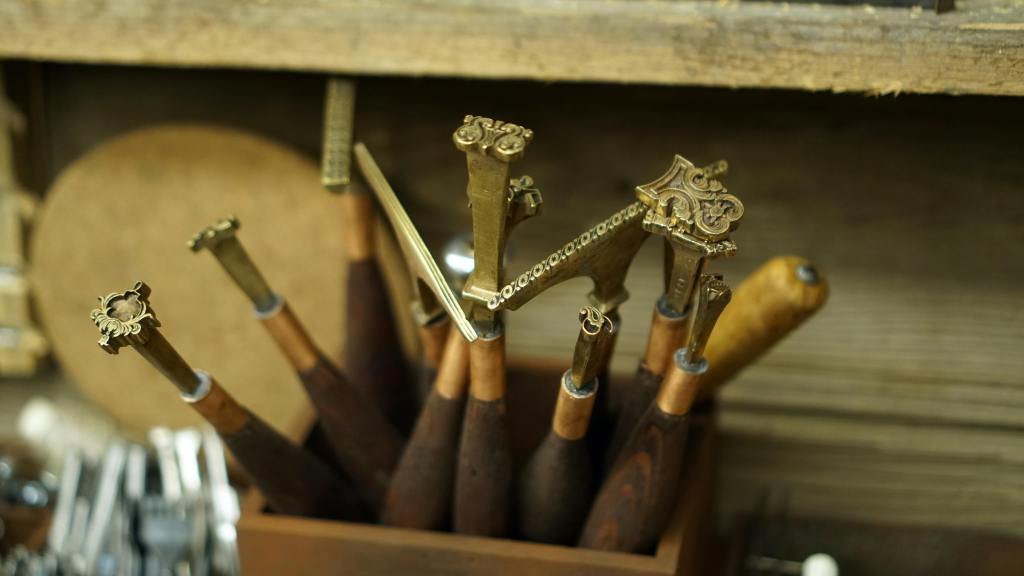
Essential Tips for Collecting Antique Hand Tools
Starting or expanding a collection of antique tools can be an exciting and rewarding hobby. Learning how to identify authentic and valuable pieces is essential.
Antique tools come in various categories, styles, and shapes, with woodworking and farming tools being particularly popular among collectors. Understanding the characteristics that make a tool valuable can significantly enhance your collection.
Tools for your collection
When considering which tools to collect, some popular options include hammers, chisels, saws, axes, and hand drills.
Look for copper, brass, wood, and lead materials for hammers. A key indicator of authenticity is whether the hammer has moveable heads and if the handle can be taken apart.
Axes are another exciting category, being one of the oldest tools. These edge tools are available in several types, including single-bit felling axes, broad axes, Cooper’s axes, and mast axes, each with unique history and use.
Hand drills are also highly sought, particularly those made of wood with ivory tips or those featuring precious metal and ivory inlays.
Where to buy
When buying antique tools, purchasing in person from reputable dealers is advisable. If you are shopping at flea markets, having a ruler on hand can be beneficial for measuring and verifying their authenticity. Keeping a list of identifier marks can assist in distinguishing genuine pieces from reproductions. Reading books on collectible tools will also familiarize you with various year and model numbers.
One of the most enjoyable aspects of collecting antique tools is the many categories and niches to explore. Whether your passion lies in woodworking, railroad tools, or farming equipment, selecting a specific focus can make your collecting journey more manageable.
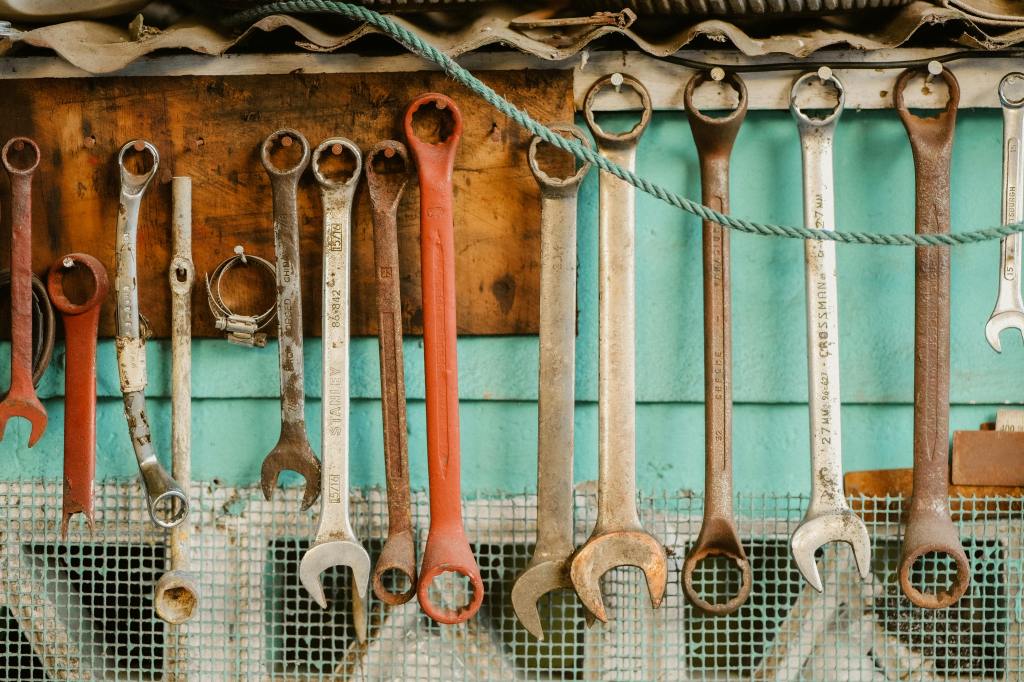
Masterpieces of Craft: Notable Museums Showcasing Antique Tools
One of the key museums dedicated to preserving pre-industrial tools and agricultural heritage is the Mercer Museum. This institution showcases a collection of antique tools and exhibits that educate collectors and enthusiasts alike. Visitors can explore the extensive displays highlighting these tools’ history and significance in agricultural practices.
Transport Museum
Another example outside the United States is the Transport Museum in Glasgow, Scotland. This museum features a collection of agricultural tools, including bench planes, bridle plows, and unique rosewood braces. The museum provides visitors with a comprehensive understanding of how transportation and agriculture have intertwined throughout history.
Art Institute of Chicago
Another notable institution is the Art Institute of Chicago, which houses a collection of early European tools. This museum’s exhibits highlight the artistry and innovation of toolmaking in Europe.
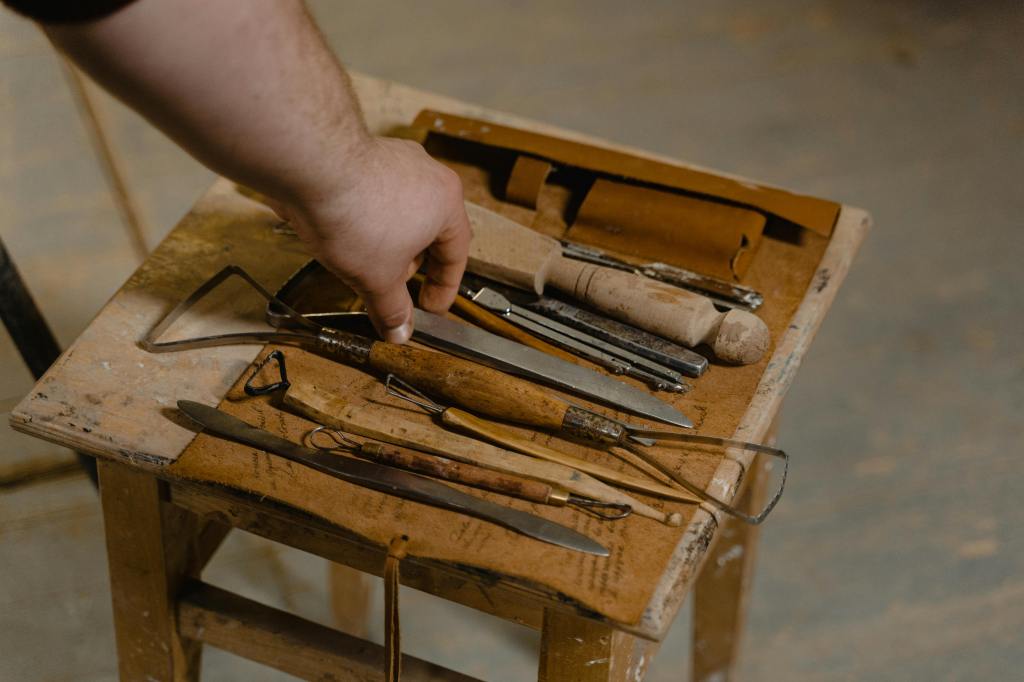
Protecting the Past: Preserving and Storing Antique Tools
Caring for antique tools requires a thoughtful approach that balances cleaning, restoration, and preservation.
As is vs. restoration
Many collectors fall into two categories regarding their tools: some prefer refinishing and restoring them, while others advocate leaving them in their original state. This decision often depends on the tool’s intended use. If you plan to use the tool for practical purposes, such as woodworking with a hand plane, restoring it to its original functionality may be the best option.
Cleaning
When considering cleaning and restoring tools, using materials that won’t damage the patina or finish is essential. Opt for natural-based cleaning solutions and avoid harsh chemicals that could harm the surface. When cleaning, utilize soft cloths to prevent scratches and further wear. For cutting tools, ensure the blade is sharpened correctly and securely fastened to the tool for safety and effectiveness.
Storage
Additionally, proper storage is crucial for maintaining the historical value of your antique tools. Store them in a dry, temperature-controlled environment. Avoid storing them in a basement or attic, which may expose them to humidity or temperature fluctuations.
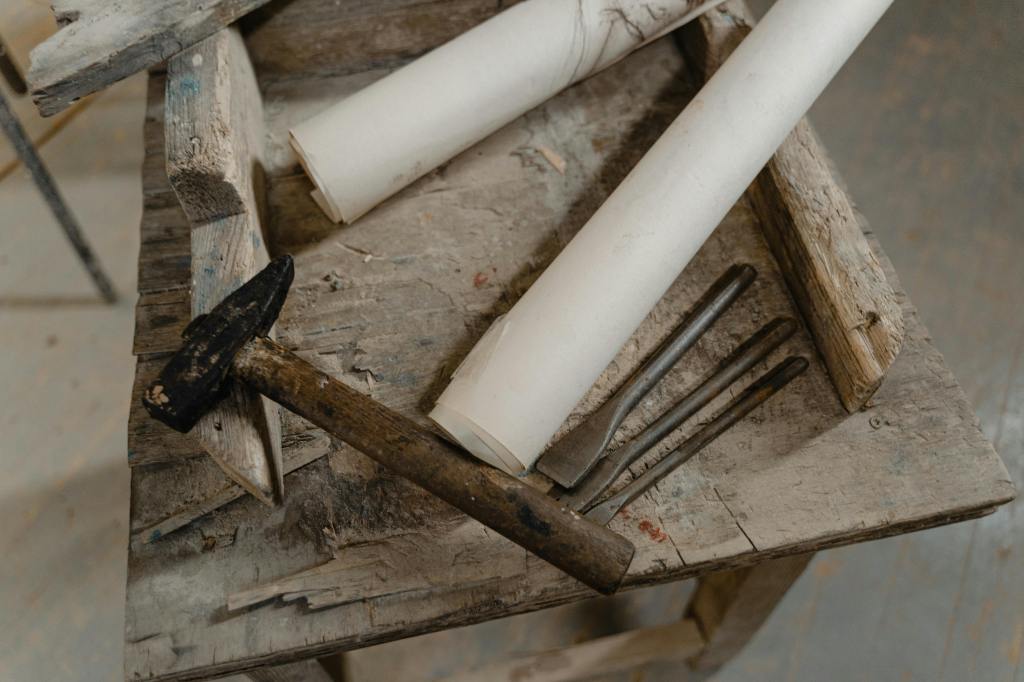
Antique Tool Appraisal: Understanding Value and Authenticity
Several key factors, including age, rarity, and historical significance, play a role in determining the value of antique tools.
Each of these elements contributes uniquely to a tool’s overall worth, making it essential for collectors or sellers to understand them. For instance, age tends to correlate with value directly; older tools are often sought after due to their historical context and craftsmanship.
Rarity
Rarity is another factor that influences a tool’s value. Tools that were handmade or produced in limited runs are typically more desirable. For example, a limited-edition Stanley tool may command a higher price due to its scarcity among collectors. A tool’s uniqueness can significantly increase its worth, making rare items particularly prized within the antique market.
Condition and materials
Condition and the materials used in the construction of the tool also play significant roles in appraising its value. Tools exhibiting unique characteristics, such as an artistic design or exceptional craftsmanship, can surpass the worth of more common alternatives. Quality materials like boxwood, rosewood, and ivory are attractive to collectors, as they are considered rare.
Significance
Historical significance can dramatically enhance a tool’s value, mainly if it can be traced back to a prominent historical figure. A tool once owned or used by someone of historical importance will often fetch a higher price due to its unique story and connection to history. Collectors look for these connections as they seek to invest in past pieces that carry utility and a rich narrative.
Those interested in getting antique tools appraised should consider several aspects. Look out for the maker’s marks, which can provide insight into the tool’s authenticity and provenance. Additionally, check the wear and tear to help in assessing its value.
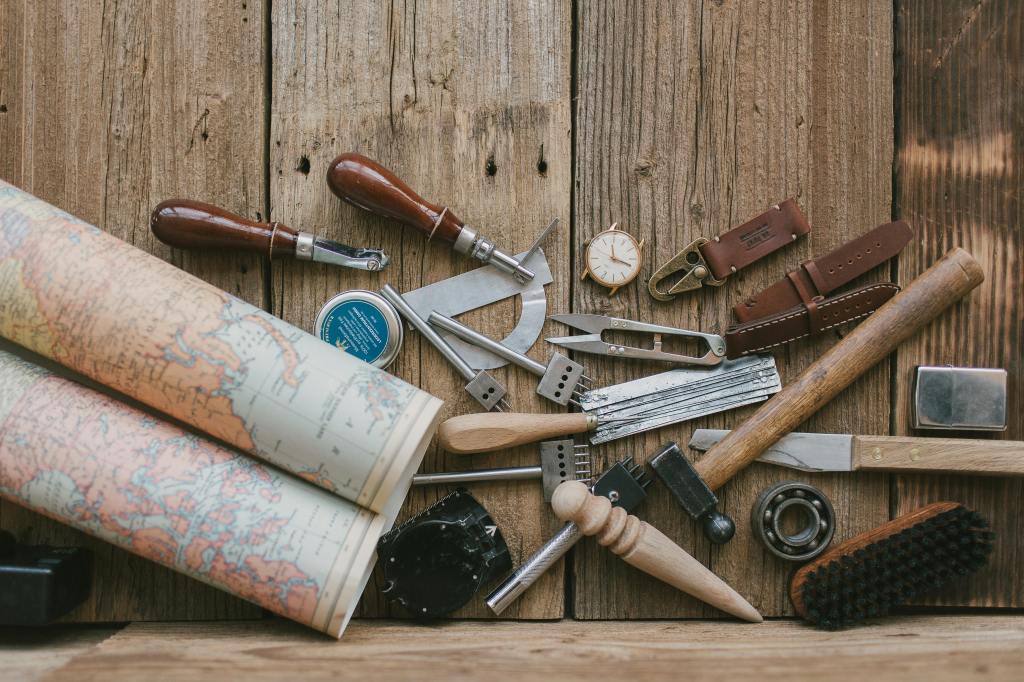
Conclusion: Celebrating the Legacy of Antique Hand Tools
Antique tools are a testament to the historic craftsmanship of the skills and techniques passed down through generations. These historical artifacts showcase the legacy of past artisans and inspire contemporary artisans to embrace traditional methods.
An antique tool collection can connect us with our history, enriching our understanding of time-honored practices. As we continue to collect and preserve these tools, we honor their significance and ensure that the knowledge and skills associated with them remain alive.
Sources
https://joeolujic.com/old-school-hand-tools-why-sometimes-the-basics-are-best/
https://www.britannica.com/technology/hand-tool/European-usage
https://www.lovetoknow.com/home/antiques-collectibles/antique-hand-tools
https://www.thebestthings.com/toolmus.htm
https://www.bladeforums.com/threads/vintage-tools-museum-list.1525011/
https://virginiatoolworks.com/2012/04/16/archival-tool-preservation-cleaning-and-tuning/
https://www.metmo.co.uk/blogs/news/tat-or-treasure-understanding-the-value-behind-antique-tools-with-examples?srsltid=AfmBOopKA_miNCs2BYuNC0OeqESh25aY_kYuqz6e_FzCFONwWzTzIVoV
About Collectibles Insurance Services
Collectibles Insurance Services has been protecting collections since 1966 and all coverage is provided by a carrier with a group rating of “A” (Excellent) by AM Best, the leading rating agency for the insurance industry.
Comprehensive coverage includes, but is not limited to: accidental breakage, burglary, fire, flood, loss in the mail, theft, natural disasters, and other causes of loss unless specifically excluded from the policy. Deductibles start at $0 for collector policies and we provide coverage for the market value of your collection for losses in excess of $50.
Additionally the protection extends At home and away, and we don't require collection itemization and serial number nor extensive paperwork and red tape.
